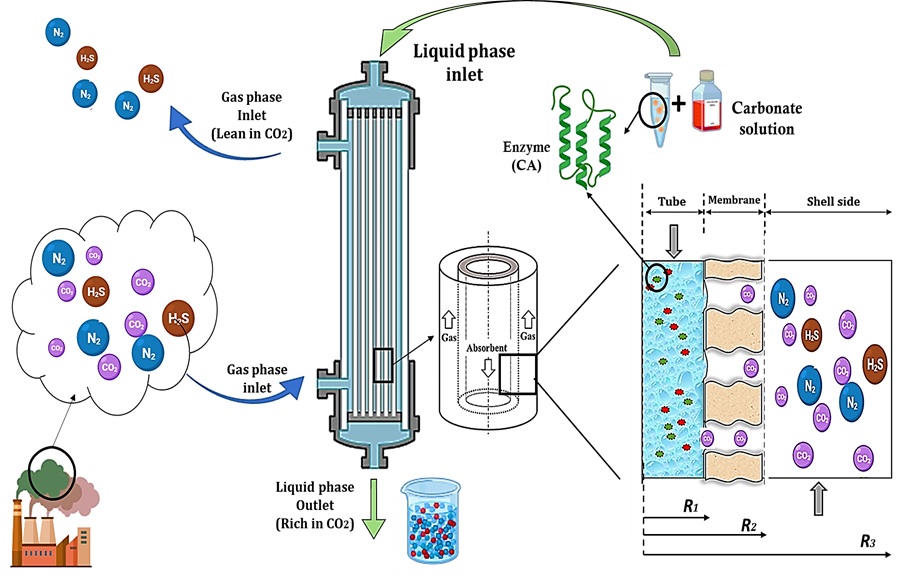
Due to the widespread use of fossil fuels, atmospheric levels of carbon dioxide (CO₂), a major contributor to climate change, have increased dramatically. Through the simulation of a two-dimensional (2D), bovine carbonic anhydrase (bCA)-mediated mechanism, this work presents a novel approach method for CO₂ capture using a membrane contactor; the technique uses aqueous carbonate solution as a chemical solvent. It is tested both with and without bCA. The influence of important parameters on the CO₂ capture performance, such as gas flow rate, liquid flow rate, and bCA concentration in both counter- and co-current flow, are investigated. The results show that the addition of 5 mg L⁻¹ bCA improves the removal efficiency by 24%; it is found that increasing the gas flow rate of CO₂ from 10 mL min⁻¹ to 30 mL min⁻¹ reduces the CO₂ removal from 60.47% to 23.94%, whereas with 5 mg L⁻¹ bCA, increasing the gas flow rate of CO₂ from 10 mL min⁻¹ to 30 mL min⁻¹ reduces the CO₂ removal from 84.09% to 46.85%. Increasing the liquid flow rate from 10 mL min-1 to 30 mL min-1 increases the CO2 removal from 60.47% to 87.06% without the addition of bCA; with 5 mg L-1 bCA, the CO2 removal increases from 84.06% to 95.04%. The counter-current is better than the co-current by a 4% improvement. The effect of the bCA enzyme on CO₂ capture is limited by the availability of CO₂ (the substrate) and the catalytic capacity of the enzyme. Maximum CO₂ removal efficiency, approaching almost total removal, is achieved at an enzyme concentration of approximately 30 mg L⁻¹ for the same CO₂ load.
Total file downloads: 14